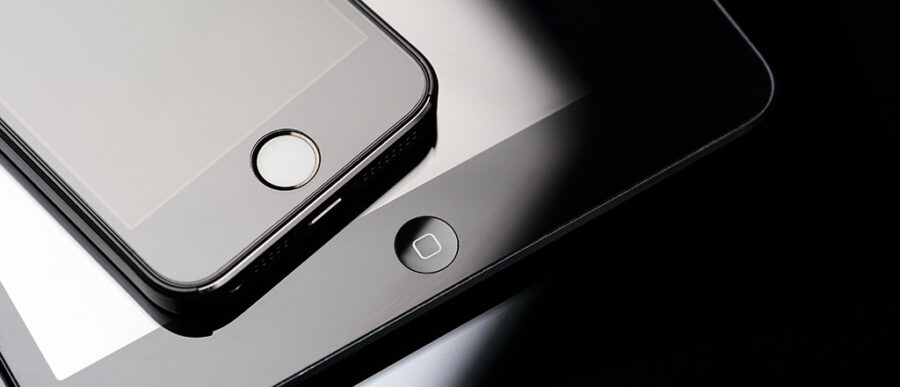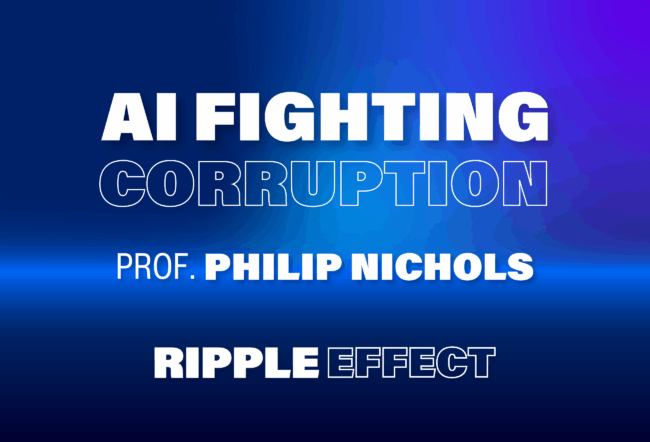Apple’s disappointing second quarter earnings – including the first-ever drop in sales for the iPhone – sent the company’s stock tumbling for eight consecutive trading sessions. It was the first such drop since 1998 and, coupled with comments by activist investor Carl Icahn that he has dumped his shares in the company, it accelerated worries about how Apple will deliver the strong future growth that investors have come to expect.
Coming off more than a decade of blockbuster products, Apple – the most valuable company in the world based on market capitalization — has become so large that Wharton experts say it is now confronting the law of large numbers, which suggests that its high earnings and growth in share price will eventually slow.
At this point, what Apple needs is its next iPhone – but Wharton experts caution that it will take more than moonshots to cement robust future growth for the company. Moreover, it’s unlikely that the company can come up with a new hit product that will rapidly improve sales immediately. In the meantime, the iPhone is coming off a strong upgrade cycle, the iPad has lost momentum, and the Apple Watch, while successful to some degree, hasn’t moved the needle as significantly as many past new products.
“No … company can grow forever. Apple has had an extraordinary run, and it’s still a phenomenally successful company,” says Kevin Werbach, a legal studies and business ethics professor at Wharton. “Few companies in history have ever had a product as successful as the iPhone, so it’s a bit much to expect that Apple find a second one.”
An Expectations Problem?
Apple’s sales for the fiscal year ending Sept 30, 2015, were $233.7 billion, up from $182.8 billion in fiscal 2014. By contrast, in fiscal 2011, Apple sales were $108.2 billion, which was up from $36.54 billion in fiscal 2009. Wall Street is expecting Apple to grow revenue by under 4% in fiscal 2016, compared with a 28% revenue expansion in the last fiscal year, Thomson Reuters reported in January.
While the smartphone market globally may be hitting the saturation point, Apple CEO Tim Cook noted that the iPhone, which accounts for 65% of the company’s revenue, can still take share from Android users and grow globally. Though the earnings announcement was disappointing in the face of past successes, Apple is hardly hurting: Second quarter net income was $10.5 billion on revenue of $50.6 billion. A year ago, Apple reported second quarter earnings of $13.6 billion on revenue of $58 billion.
Cook said on the company’s earnings call that Apple’s iPhone business is still strong. “From an upgrade perspective, during the first half of this year, the upgrade rate for the iPhone 6s cycle has been slightly higher than what we experienced in the iPhone 5s cycle two years ago, but it is lower than the accelerated upgrade rate we saw with iPhone 6, which as you know, was a big contributor to our phenomenal revenue growth a year ago,” said Cook on the April 26 call. “We continued to see a very high level of customers switching to iPhone from Android and other operating systems. In fact, we added more switchers from Android and other platforms in the first half of this year than any other six-month period ever.”
Nevertheless, analysts are anxious about what Apple has in the iPhone pipeline in the future. “There was massive pent up demand for larger screens. This led to the mother of all upgrades when the iPhone 6 was released,” explained Macquarie analyst Ben Schachter in a research note. “We don’t think this is anything structural and will be solved by time. However, a second issue is a more significant concern. We believe that the lack of new ‘must have’ innovative features will lengthen the upgrade cycle. If iPhone 7 doesn’t surprise with meaningful new useful features, we worry that consumers won’t upgrade.”
“No … company can grow forever. Apple has had an extraordinary run, and it’s still a phenomenally successful company.” –Kevin Werbach
In other words, the smartphone market is starting to look more like the PC industry, where there is little to differentiate different companies’ product lines and customers stretch the lifespans of their systems for longer than vendors would like. “The market is gradually shifting from smartphone introduction to smartphones on a replacement cycle,” says Werbach. “That’s simply not going to be as dynamic a market opportunity, although it will still be a very good one. Microsoft is still doing fine after personal computers shifted from a rapid growth market to one based on replacement, although it’s not the rocket ship it once was.”
But it’s clear that Apple’s once-hot product line is cooling. For the second quarter, Apple’s iPhone revenue was down 18%, iPad revenue fell 19% and Mac revenue fell 9%. On the bright side, Apple’s services category (which includes Apple Music and iCloud subscriptions, software sales and App and iTunes store revenue) was up 20% to $5.99 billion in the second quarter. Apple’s “Other Products” category, which includes Apple Watch, Apple TV and Beats headphones, increased 30% to $2.19 billion.
“The next two to three quarters will be critical for Apple because there’s a problem of expectations for both the iPad and iPhone,” says Saikat Chaudhuri, an adjunct professor of management at Wharton and executive director of the school’s Mack Institute for Innovation Management. “There’s a natural maturation process, and Apple is big and slowing down.”
‘One Great Innovation Can Last for a Decade’
David Hsu, a management professor at Wharton, says that Apple’s conundrum isn’t unique. Many companies such as Microsoft and IBM have developed new technologies to grow quickly, but then are forced to reinvent their businesses. “One great innovation can last for a decade,” explains Hsu. “But the broader issue is that the smartphone category has matured and many people have multiple devices. It’s hard to sustain the iPhone growth and create new products because Apple is following up the most popular product in history.
“There’s no doomsday picture here,” adds Hsu. “But the iPhone peak may have already passed.”
Indeed, Apple projected further deceleration in sales as third quarter revenue is expected to be $41 billion to $43 billion. Average selling prices will also fall due to the launch of the iPhone SE, a 4-inch phone device that’s less expensive and aimed at emerging markets. “It is becoming clear that Apple has a significant iPhone growth problem on its hands,” said Neil Cybart, a former Wall Street analyst who follows the company via his subscription Above Avalon site. “The combination of a slowing iPhone upgrade rate and declining number of growth catalysts for expanding the iPhone’s addressable market will make it very difficult for management to report unit sales growth going forward given its current strategy.”
However, Peter Fader, a marketing professor at Wharton, isn’t worried about Apple. “Customers are more in love with Apple than ever before. I’d be worried if Apple customers were switching to Android and Mac users were going to Windows,” says Fader. “There has been crazy growth, but Apple still has health and stability. Maybe Apple doesn’t have to swing for the fences.”
“The next two to three quarters will be critical for Apple because there’s a problem of expectations for both the iPad and iPhone.”–Saikat Chaudhuri
After all, Fader adds, Apple’s greatest asset is its loyal customers. “The customer base is much more important to cash flow in the future,” says Fader, who notes that Apple will have to monetize its customer base better through cloud services and subscriptions.
Hits and Misses
One factor behind Wall Street’s concerns about Apple is the realization that there may not be another iPhone-like hit that can drive the company’s growth in the future.
For years, rumors have surfaced about Apple getting into televisions and even automobiles. The Apple Watch is a new product line with potential, but it hasn’t approached the sales levels of the iPhone or iPad. “If Apple came up with a new product it may help,” says Chaudhuri. “Apple needs something new because rolling out next-generation products like the iPhone or iPad only carries the company so far.”
Reports of an Apple car have been rampant. Apple’s entry into the auto industry could prove significant, but at the expense of profit margins. For instance, while Ford had 2015 annual sales of $140.56 billion, the company’s net profit margin is projected to be 5.6% this year compared to Apple’s estimated projected 21% for fiscal 2016.
“It is not easy to become an automaker. I don’t know why Apple would take those profit margins,” says Chaudhuri.
Werbach agrees that Apple shouldn’t fall into the trap of producing commodity hardware whether it’s a new category or the iPhone. “Apple’s key challenge is to preserve its premium brand value when it comes to hardware. People pay more for Apple hardware, even in markets where everyone else faces commodity margins. It gives them a unique advantage,” Werbach says. “If that goes away, Apple is unlikely to be able to differentiate enough on software and services to maintain its margins.”
Fader says Apple needs to be careful about focusing on hit products as a way to drive sales. “Apple is going to have to be about running the business better than creating a ‘wow’ moment all the time,” says Fader. “How much of Apple’s future revenue is going to be product sales vs. services? The product upgrade approach is working for Apple, but the value is in all the stuff surrounding the hardware.”
While chasing an automobile could be in Apple’s future, Fader says the company shouldn’t seriously consider the market for “10 to 15 years” — but it’s fine to have “a toe in the water.”
“Customers are more in love with Apple than ever before.” –Peter Fader
Chaudhuri says that Apple can still develop hardware hits, but it will have to look to new markets. For instance, he argues that Apple’s partnership with IBM to develop corporate apps highlights how the company is aiming to target the business-to-business market.
In addition, Apple could be more of a player in the Internet of Things, networks of sensors that are making everyday objects smarter. “Apple could play a role in telematics to even how automation is run,” says Chaudhuri. “There are other areas to exploit.”
One way that Apple could develop new products and markets is through acquisition. To date, Apple has bought companies that can be easily integrated into its products, such as its 2014 purchase of Beats Electronics for $3 billion, which included the popular line of headphones, an audio hardware business and a streaming music service.
Fader says Apple could acquire big brands in the future and fold them into the Apple culture. Maybe Apple even buys Tesla, he adds, which is one of the few startups in the auto industry to seriously challenge industry incumbents.
According to Hsu, the larger question is about Apple’s ability to develop new products through its own research and development. “Apple will still play a big role, but it’s more about design for the company. Apple is more of a visionary, but doesn’t have a R&D heritage,” says Hsu. “Apple’s role has been to redesign existing categories.”
Beyond the Balance Sheet
Given the pressure facing Apple, it’s not surprising that Cook has emphasized services and subscriptions for the last two quarters. “We feel really great about the early success of Apple’s first subscription business, and our music revenue has now hit an inflection point after many quarters of decline,” said Cook during the earnings call. He noted that App Store revenue was up 35% in the second quarter. “One billion-plus active devices are a source of recurring revenue that is growing independent of the unit shipments we report every three months.”
While Apple searches for its next category to tackle, Fader says the company needs to focus more on selling services to its installed base of customers.
“Apple’s most golden asset is the one that isn’t on the balance sheet.” –Peter Fader
To Fader, Apple’s growth conundrum is analogous to software companies that have to transition from business models that revolve around licensing to one focused on subscriptions and cloud services. The difference for Apple is that its growth to date has been mostly about hardware. “Apple will have to move from selling things to retaining customers and selling services and subscriptions,” says Fader.
Chaudhuri agrees with Fader, but has doubts about Apple’s ability to be a leader in services. “I don’t think Apple has it in its DNA to be a strong services provider,” he says.
Fader says there is historical precedent for a company to transition to a new model. Adobe Systems was among the first companies to transition to cloud services, he notes, and Starbucks refocused on customer experience, easing transactions and then selling its customer base more products through a loyalty program and apps.
“Starbucks also used to be about selling a product, but realized that the competition caught up,” says Fader. “Now it’s about a customer base, experience and related things to monetize.”
Apple still has work to do, according to Fader. “Apple isn’t No. 1 in any cloud category,” he notes. “For instance, Apple Music has a user experience comparable to Spotify, but it can’t sell services without a shiny new object to attract customers.”
The challenge for Apple is that it doesn’t have the analytics or customer knowledge that rivals like Amazon or Netflix have. “Apple has been bad with data and predictive analytics behind the scenes,” says Fader. “The key to victory will be valuing the customer base.”
Apple should study Starbucks, says Fader. “Because of data and analytics, Starbucks has made it very easy to order more coffee,” he points out.
Ultimately, Apple has to see its customer base as its primary asset much like Amazon does. “Apple’s most golden asset is the one that isn’t on the balance sheet,” says Fader.



